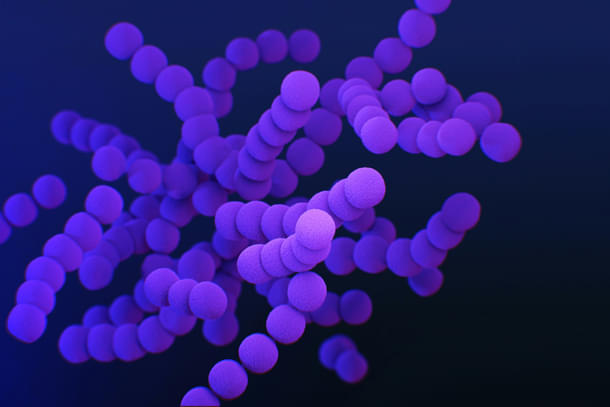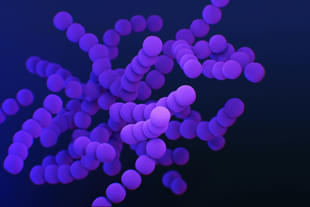Science
AI To The Rescue In Fight Against Antibiotic Resistance? Machine Learning Helps Identify Nearly 9 Lakh New Antimicrobials
Karan Kamble
Jun 12, 2024, 04:52 PM | Updated 04:41 PM IST
Save & read from anywhere!
Bookmark stories for easy access on any device or the Swarajya app.


Antibiotics work by killing bacteria in the body, or at least by stopping them from multiplying. They have been used for decades to treat various bacterial infections, such as pneumonia and tuberculosis.
But bacteria are smart. It so happens that they are able to adapt in repeated battles and learn how to win the war the next time it comes around.
Indiscriminate prescription of antibiotics over the years has given bacteria a steady stream of opportunities to survive the drug onslaught and even thrive in the face of medication that’s meant to kill them.
Infections that were once easily curable with antibiotics can now become difficult or even impossible to treat, as a result.
This has given rise to an ever-deepening public health crisis. In 2019, antimicrobial or antibiotic resistance (AMR) claimed the lives of over 12 lakh people worldwide, with nearly 50 lakh deaths associated with AMR, as per a study published in The Lancet.
Although AMR is already a leading cause of death around the world, its impact is set to get worse in the coming decades — according to the World Health Organization (WHO), the world could be heading towards 100 lakh deaths annually by 2050 on account of AMR.
This crisis can be averted in three ways, with all of the means working in tandem: responsible use of antibiotics, developing new antibiotics, and finding alternative ways to prevent and treat bacterial infections.
Artificial intelligence (AI), which is starting to dominate use cases in diverse fields, has provided a breakthrough in the second of the three ways — development of new antibiotics.
Researchers have used a form of AI called machine learning to predict close to 9 lakh new antibiotics in the global microbiome as currently represented in public databases.
The candidate “antimicrobial peptides (AMPs)” were unearthed from diverse habitats like soil, aquatic environments, and the human gut.
AMPs like enfuvirtide and telaprevir have already been used clinically as antiviral drugs. They carry great promise as potential therapeutics.
In the study published in Cell, researchers computationally explored 63,410 publicly available metagenomes and 87,920 high-quality microbial genomes to come up with a vast array of AMP candidates.
The discovery effort has led to the creation of AMPSphere, an open-access resource containing 863,498 non-redundant peptide sequences and 6,499 high-quality AMP families from 72 different habitats. Most of the AMPs (91.5 per cent) were previously unknown.
Only 0.7 per cent of the identified AMPs matched experimentally validated sequences in existing databases. Additionally, most AMPs were absent from protein databases not specific to AMPs, such as the Small Proteins database or the Global Microbiome Gene Catalog of canonical-length proteins.
The new AMPs were found to be specific to certain environments and microbes. Some AMPs probably evolved from longer protein molecules being shortened or duplicated and mutated over time.
Once they had the predicted AMPs, the researchers put a small sample to the test against 11 disease-causing bacterial strains, including antibiotic-resistant strains of E coli and Staphylococcus aureus.
Of the 100 synthesised AMPs, 79 were found to kill harmful bacteria like drug-resistant Acinetobacter and Enterococcus. Some AMPs even worked against bacteria from the healthy human gut.
The way many of these candidate molecules destroy bacteria is by disrupting their outer protective membranes.
In experiments with infected mice, some AMPs reduced bacteria levels by up to 1,000 times when used as antibiotic treatment.
“AI in antibiotic discovery is now a reality and has significantly accelerated our ability to discover new candidate drugs. What once took years can now be achieved in hours using computers,” study co-senior author César de la Fuente said.
Traditionally, new antibiotics come from manually screening microorganisms found in the environment, such as soil and plants. Arriving at a successful antibiotic from scratch typically takes well over a decade.
In sharp contrast, AI has helped uncover a vast untapped reservoir of novel antimicrobial candidates in very little time — probably a matter of hours. This, and other similar work in the future, could significantly dent the scary advance of antibiotic resistance, and the consequent deaths, worldwide in the years to come.
Karan Kamble writes on science and technology. He occasionally wears the hat of a video anchor for Swarajya's online video programmes.





